Every day, approximately 1000 people die from asthma-related causes, and an estimated 339 million people suffer from the disease worldwide today.1,2 Although asthma can appear at any age, many patients develop it early in childhood and have to manage it their entire lives as there is no cure. Triggers, such as pollen or air pollution, can lead to attacks as the airways become inflamed. With growing concern about air pollution levels in some areas of the world, experts predict an additional 100 million people will develop asthma by 2025.1,2
Asthma is typically treated with the two-pronged approach long-term control and quick relief treatments.3 Long-term control medicines typically come in the form of inhaled corticosteroids. In terms of ongoing alleviation of inflammation, they are the most effective treatment option available.3 When attacks do occur, patients will typically use an inhaled short-acting beta2-agonist to stop symptoms quickly.3 It is also recommended for asthma patients to avoid triggers whenever possible which may affect quality of life.
Recent Advances in Asthma Research
The American Thoracic Society (ATS) recently published an editorial spotlighting studies conducted in 2018 which significantly advanced asthma research. The editorial outlined three areas where they believe substantial progress has been made:
- Deciphering the genetic roots of asthma
- Understanding the molecular basis of its heterogeneity
- Using this new information to improve the lives of patients with the most severe cases4
ATS cites three primary reasons for these advancements including:
- A deeper understanding of asthma causes, specifically the ORMDL3 locus which is correlated with early indication of asthma in childhood
- Additional discoveries related to T2-type asthma, such as the promise of drugs to inhibit IL-6–mediated immune responses to control inflammation
- The development of new biologics which have drastically improved quality of life for many patients4
Despite these advances, the continued need to better control asthma aggravation and improve treatment adherence in patients was also highlighted.4

Pre-clinical Approaches to Studying Asthma
Preclinical studies of asthma have played a significant role in the advancements mentioned above. To create a model of asthma, researchers typically use rodents and expose them to ovalbumin (OVA). OVA is a frequently used allergen which induces a robust allergic pulmonary inflammation derived from chicken eggs. Animals are sensitized to OVA over time with I.P. injections and are later exposed to OVA using an aerosol to induce acute allergic airway inflammation. Airway Hyperresponsiveness (AHR) is assessed using a muscarinic receptor (Methacholine).
Primary endpoints of interest in asthma research include respiratory rate, peak flows, and resistance, all of which assist in determining levels of bronchoconstriction.

Asthma Publications Citing Use of DSI Technology
The following are two examples of studies in which DSI solutions were used to achieve their goals. There are over 3,000 publications citing use of DSI technology in pre-clinical asthma studies on Google Scholar.
Allergy immunotherapy restores airway epithelial barrier dysfunction through suppressing IL-25 -induced endoplasmic reticulum stress in asthma
As previously mentioned, environmental factors, such as allergens and air pollution, have a significant influence on airway inflammation in asthma. Oxidative stress and apoptosis can increase due to exposure to allergens and induce an imbalance in airway epithelial homeostasis.
This study hypothesizes allergen specific immunotherapy (SIT) assists in maintaining epithelial function. To aid in examining this hypothesis, the research team measured airway responsiveness in 6-8-week-old female mice using DSI’s Buxco Whole Body Plethysmography. Their results showed IL-25 is a key factor in airway epithelial barrier dysfunction, and therefore a potential treatment target for asthma.2
BMAL1 links the circadian clock to viral airway pathology and asthma phenotypes
Although relationship between asthma and circadian rhythms is unknown, patients with asthma often experience variations in rhythms. This study looked at how circadian clock disruption affects asthmatic lungs using viral models of acute and chronic airway disease.5 The research team used DSI’s Finepointe Resistance and Compliance system to obtain airway resistance measurements in a mouse model of asthma and jet lag. Their results showed circadian clock genes may play a role in controlling viral airway pathology. These results link the circadian clock to characteristics of asthmatic lung remodeling through the management of viral respiratory infection. This is the first study to identify the circadian clock genes’ role in regulating asthma in mice.5
DSI solutions for Asthma Research
Resistance and Compliance (RC)
FinePointe RC hardware helps researchers measure an animal’s airflow and lung pressure. This anesthetized approach allows for direct measurement of an animal’s response to a bronchoconstrictor either using an aerosol or I.V.
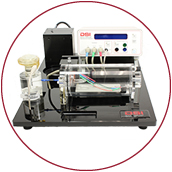
Non-invasive Airway Mechanics (NAM)
FinePointe NAM uses a specially designed Allay™ restraint and double chamber plethysmography to monitor nasal and thoracic flow simultaneously. Aerosol administration of a bronchoconstrictor is evaluated on conscious animals by deriving specific airway resistance.
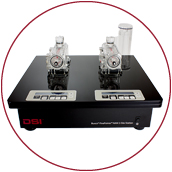
Whole Body Plethysmography (WBP)
When conscious, unrestrained approaches are desired, FinePointe WBP allows for respiratory endpoints to be obtained. This approach is often used as a quick, easy way to screen compounds, run longitudinal studies, and assess the need for further research in a more invasive model.
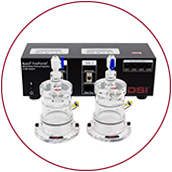
Pulmonary Function Test (PFT)
The PFT system allows for a comprehensive assessment of the lungs. All lung volumes and spirometry equivalent test results are completed in a matter of minutes; allowing for high throughput and quick results.
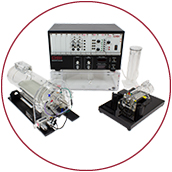
FinePointe Software
FinePointe software is powerful and easy-to-use for collecting, analyzing, and reporting respiratory data. Fully network-enabled, the smart design minimizes required user interaction while wizards walk users through necessary procedures.
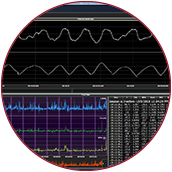
To learn more about using DSI solutions for respiratory research, download our free whitepaper or schedule a consultation with us today!
References
1Global Asthma Network. (2018). “The Global Asthma Report 2018”. http://www.globalasthmareport.org/
2Yuan X, Wang J, Li Y, He X, Niu B, Wu D, lan N, Wang X, Zhang Y, Dai X, Wang X, Liu Z, Li G. (2018). “Allergy immunotherapy restores airway epithelial barrier dysfunction through suppressing IL-25 -induced endoplasmic reticulum stress in asthma”. Nature Scientific Reports. 8,7950. https://www.nature.com/articles/s41598-018-26221-x.pdf?origin=ppub
3National Heart, Lung, and Blood Institute. “Asthma”. https://www.nhlbi.nih.gov/health-topics/asthma
4Martinez F. (2019). “The State of Asthma Research: Considerable Advances, but Still a Long Way to Go”. American Journal of Respiratory and Critical Care Medicine. 199(4), 397-413. https://www.atsjournals.org/doi/full/10.1164/rccm.201901-0013ED#readcube-epdf
5Ehlers A, Xie W, Agapov E, Brown S, Steinberg D, Tidwell R, Sajol G, Schutz R, Weaver R, Yu H, Castro M, Bacharier LB, Wang X, Holtzman MJ, Haspel JA. (2018). “BMAL1 links the circadian clock to viral airway pathology and asthma phenotypes”. Mucosal Immunology. 11, 97-111. https://www.nature.com/articles/mi201724